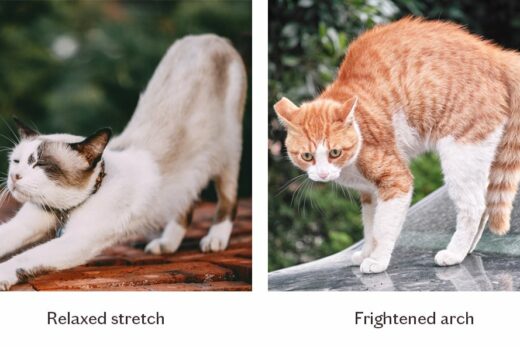We know all too well when those sparkling little eyes are looking up at you pleadingly, all you want to do is reward them with a little treat or two. It seems like we’ve all been a little too guilty of this, as 60% of vets now say that obesity is the biggest health and welfare concern for our fur babies. Obviously, treatos aren’t the only cause, but today we’re going to explore how much our kitties should weigh by using a BCS and cat weight chart, and what to do if you discover your kitty isn’t their ideal weight.
How much should my cat weigh?
The good news is that if you’re reading this blog, you’re already on the right track, as you’re clearly aware that your kitty’s weight is important. Sadly there are a huge number of cats in the UK that are overweight or obese, and the PFMA reports that this number is only on the rise. Inconveniently there is no one-size-fits-all answer as to how much your cat should weigh, so stick with us through this blog, as we’ll be talking you through how to know if your cat is a healthy weight.

Why ‘average’ Cat Weight doesn’t matter
To start things off, we first want to address a little bug bear that “average cat weight” is the most searched for term in regards to cat weight. As we’re sure you’ll agree, no kitty can be considered as ‘average’, so in the same sense, there isn’t any such thing as an ‘average cat weight’.
There are a huge number of variables that affect what a healthy weight for our kitties should be. These factors include things like coat type e.g try comparing a Siberian Cat vs a Sphynx, sex, breed, and whether they’ve been neutered or not.
We know average weight ranges for breeds are often mentioned in breed guides and these can be useful for a very initial and general idea, or for prospective cat parents. However if you’re wondering “how much should my cat weigh”, please don’t just type in average cat weight and work off whichever numbers show up.
Instead, to work out if your cat is a healthy weight we’d always recommend you carry out a BCS…
What is a BCS?
A BCS is a Body Condition Score. Essentially this is the pet version of a BMI that enables you to evaluate what weight your kitty is. The tool gives your kitty a score from being underweight to being obese. The score better takes into account the variable factors mentioned above, to give you a more accurate result. However please note the tool is still a guide, and some factors like coat type might make it trickier to carrier out (as you’ll see in one sec).
Now let’s have a look at a cat weight chart, and how to use it…
Cat Weight Chart
We’ve created this slightly simplified and condensed Body Condition Score chart so it’s super easy for you to use, giving your kitty a score of 1-5, very thin to obese. (vets typically use a score of 1-10).

Depending on the willingness of your kitty, a BCS is easy to carry out. Simply perch them on a raised surface (safely) or wherever they’re comfortable, then run your fingertips along with them. Whilst doing so check how they compare to the descriptions on the score image above, do you easily feel their ribs, spine, and shoulder bones, or is there’s a layer of fat in the way? For less furry cats it might be easy to see if their waist is raised above their ribs, but for serious floofsters like our Boo, we have to get our fingers right into the floof for a good feel.
Now you know what score your kitty is, it’s time to work out what you need to do to either maintain their current weight if it’s in the ideal section, or how to get to ideal if you’re outside…





